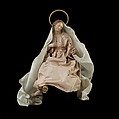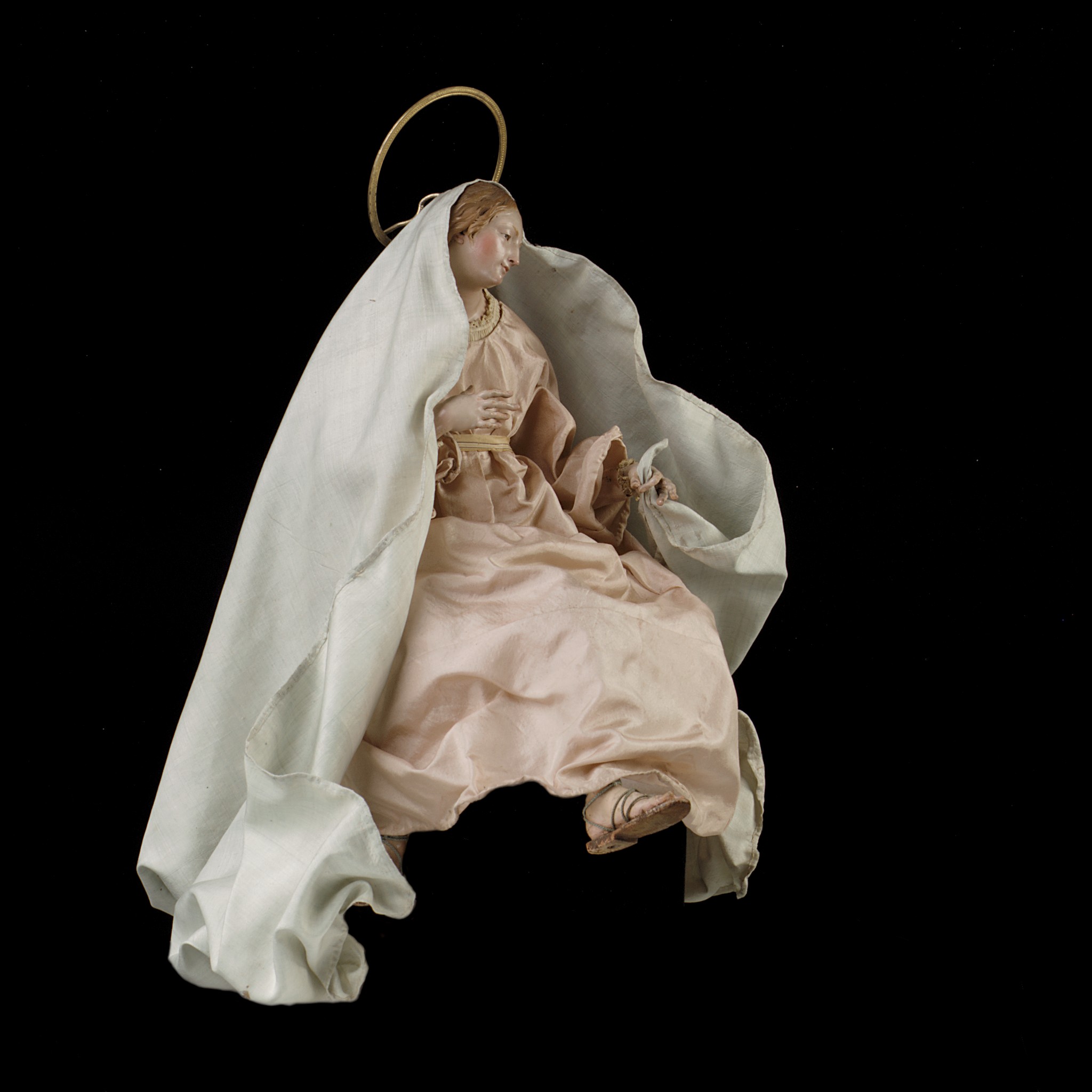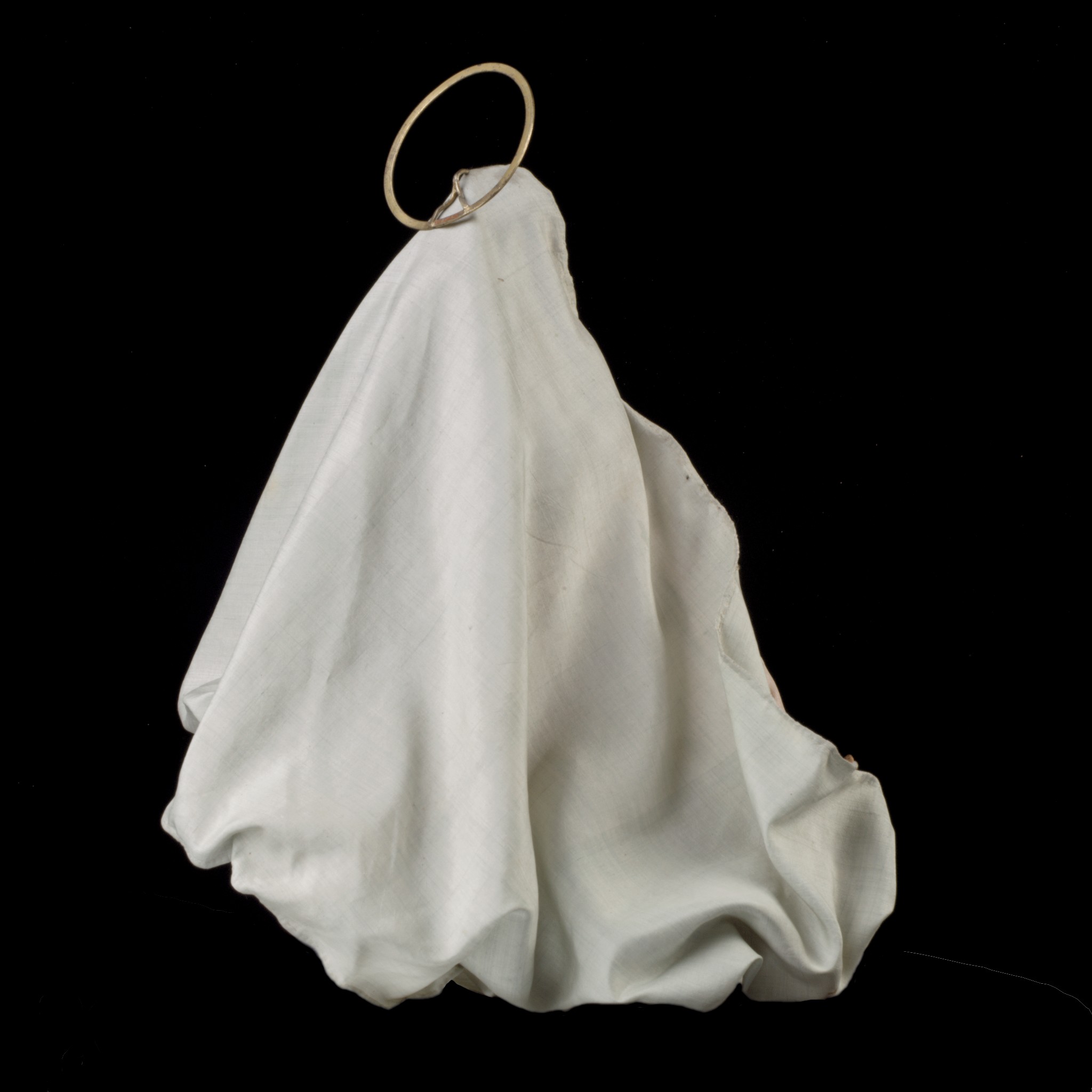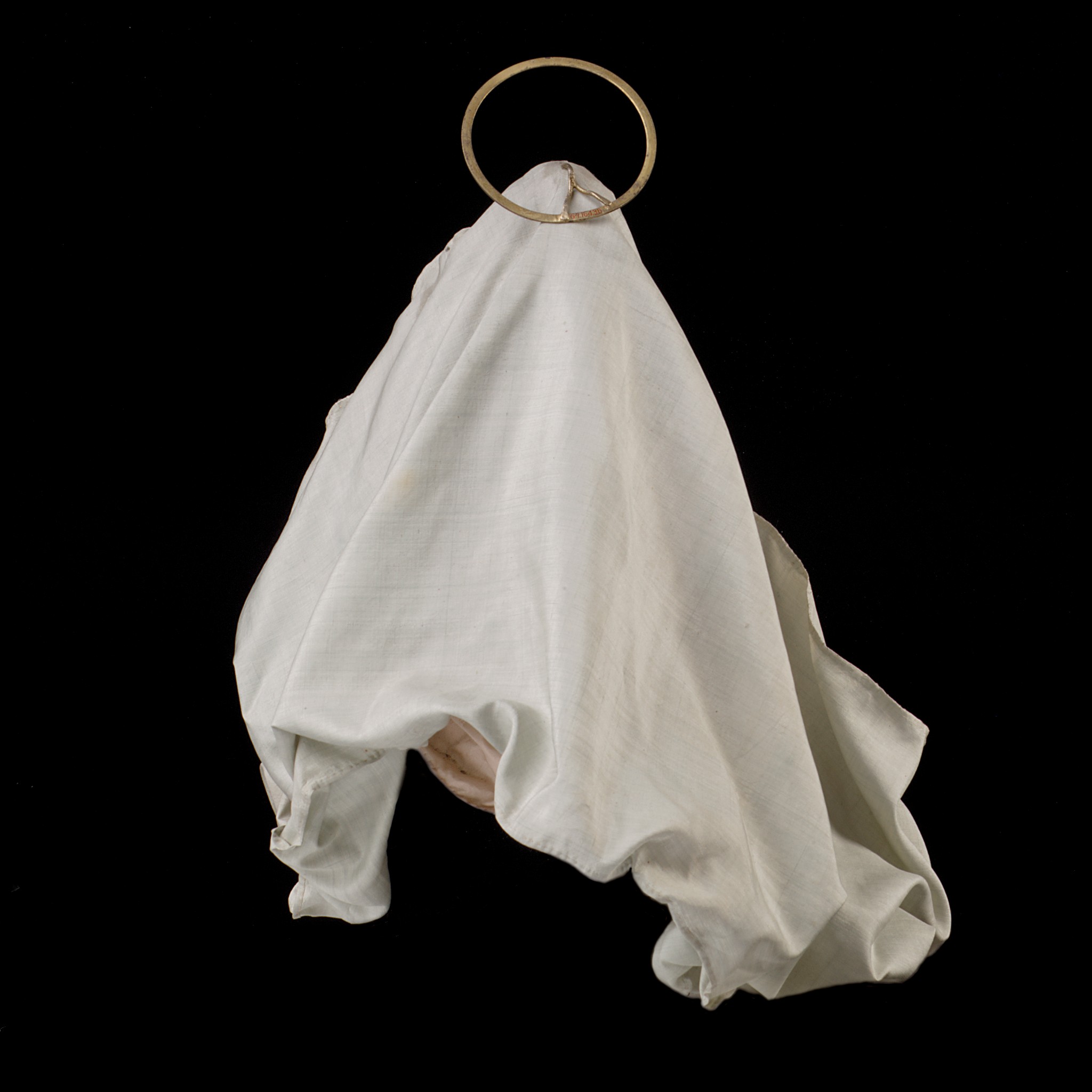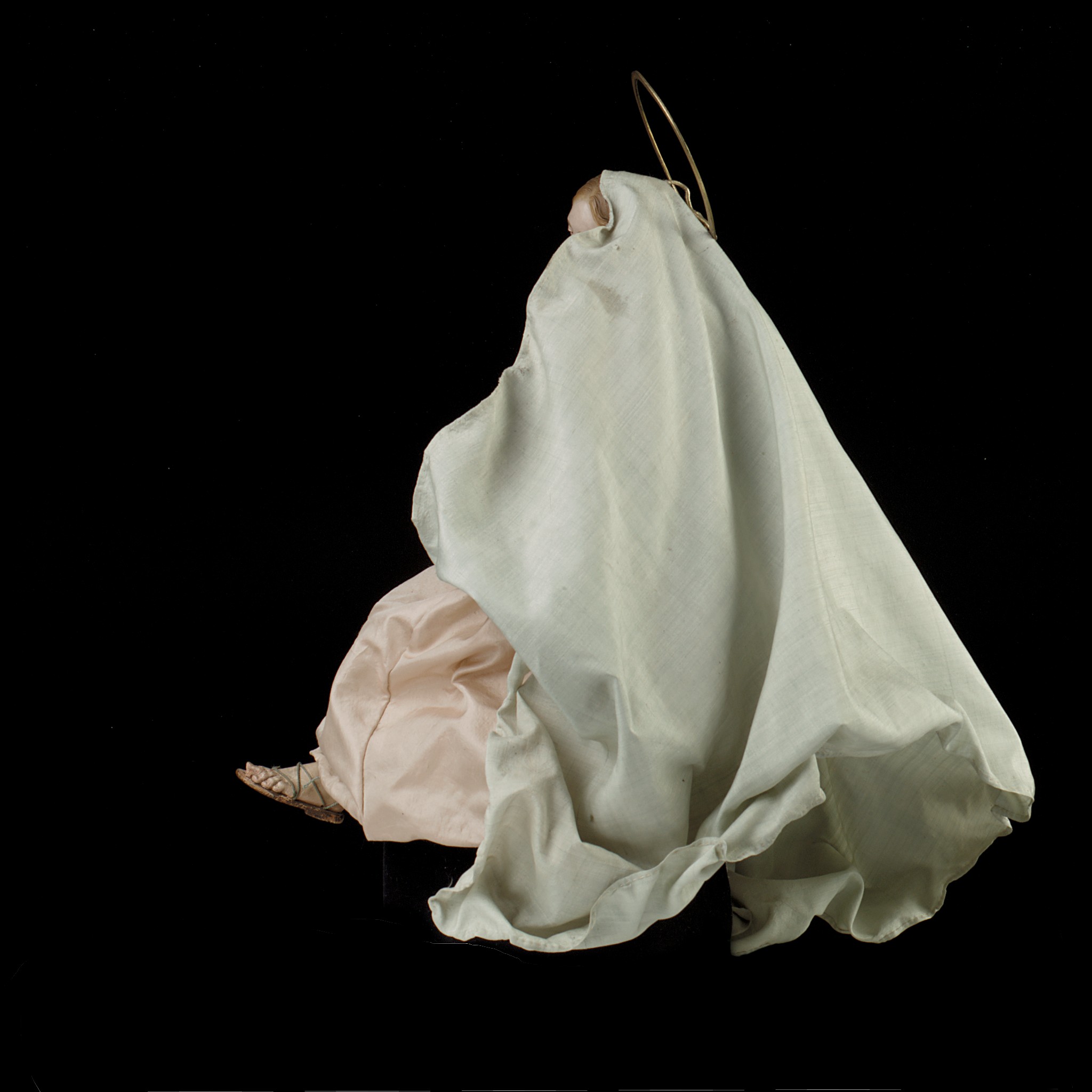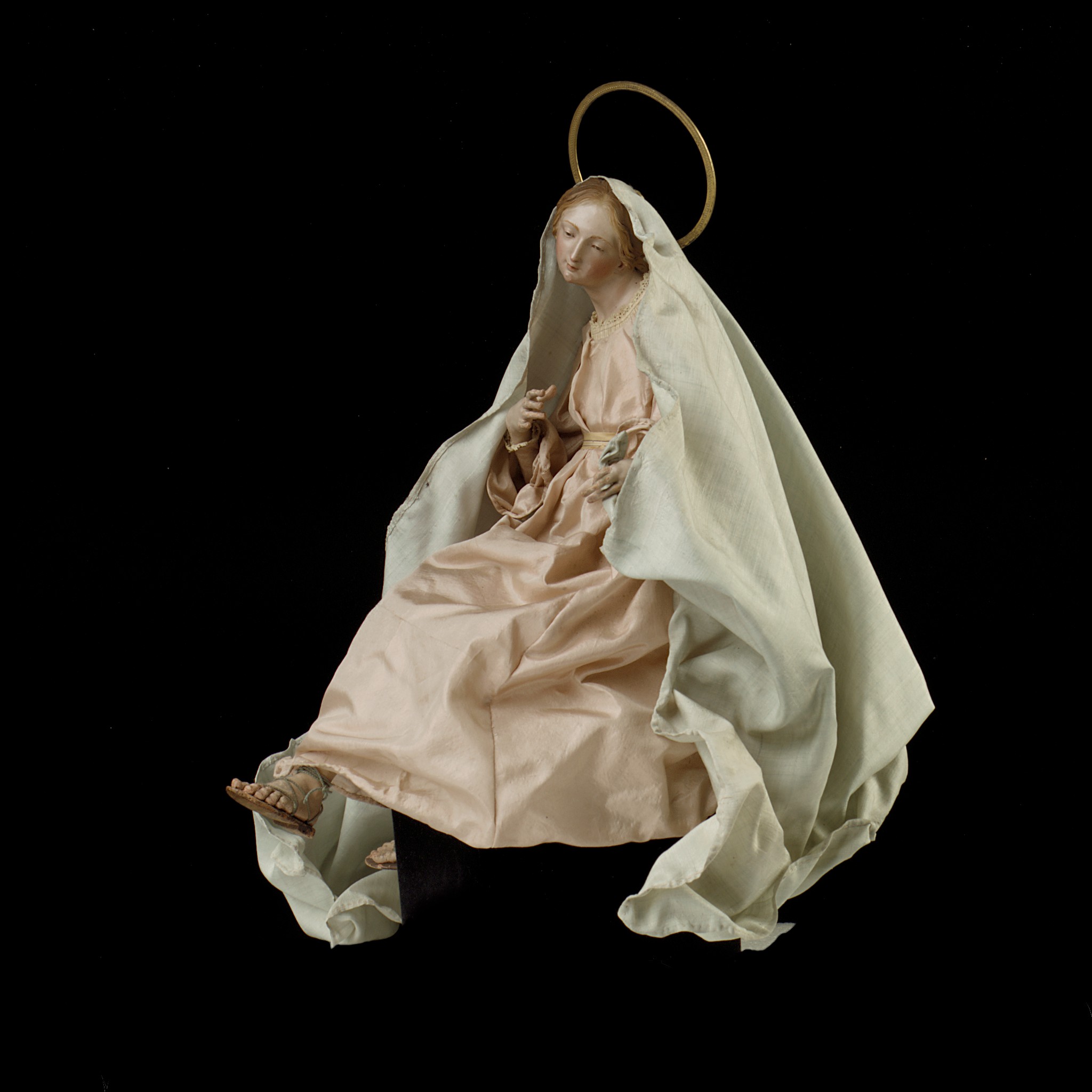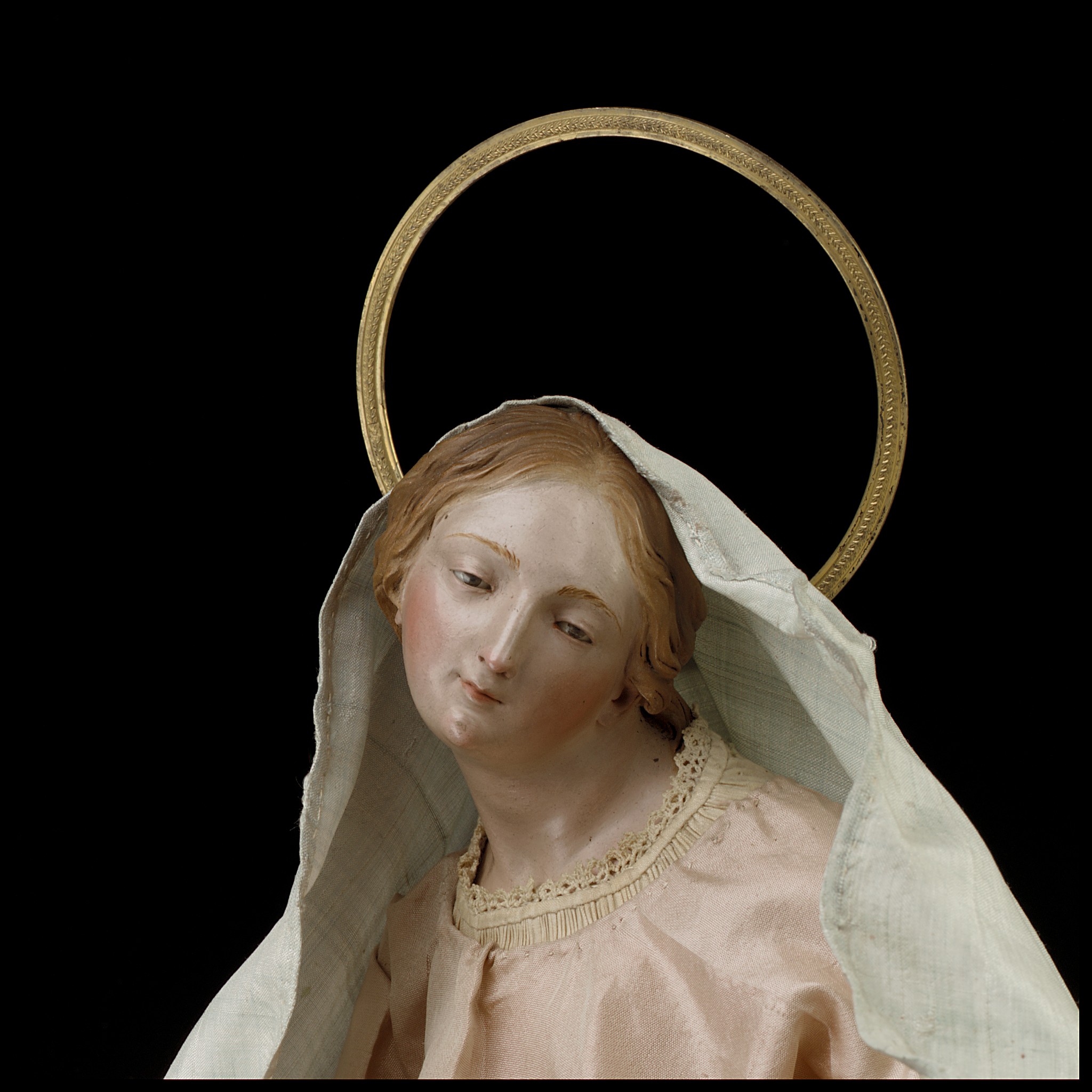Virgin
Attributed to Salvatore di Franco
Not on view
In 1964, Loretta Hines Howard generously presented to the Museum over 140 Neapolitan crèche figures, dating from the second half of the eighteenth century. The varied assortment includes figures from the three traditional scenes of a complete Neapolitan presepio: the Nativity, with angels, shepherds, and sheep; the procession of the three Magi, with their colorful retinue of attendants; and the varied and gay crowd of country and town people thronging the tavern, or inn, of Bethlehem — the diversorium mentioned by St. Luke, where on the Holy Night there was no place for Mary and Joseph. Averaging between twelve and fifteen inches in height, according to the position they were to take in perspective in the stage set, the figures are pliable and can be given poses at will, according to their facial expressions. Their bodies are made of tow and wire, their arms and legs are finely carved of wood, and their heads and shoulders are modeled of terracotta and accurately finished. Their attire, often enriched by accessories, jewels, and embroideries, is a sheer joy for the lover of folklore and eighteenth-century costumes.
According to a tradition that seems to be supported by stylistic comparisons with figures in the collections of Naples and in the vast holdings of the Bavarian National Museum in Munich, some of the winsome heads of the Howard angels are to be credited to the best eighteenth-century masters: Giuseppe Sammartino (1720–1793), well known for his monumental sculptures in marble and in stucco, his pupils Salvatore di Franco, Giuseppe Gori, and Angelo Viva, and one Lorenza Mosca (d. 1789), who was employed at the Royal Porcelain Factory at Capodimonte and stage director of the Royal Christmas Crib.
Since Mrs. Howard's gift, the Museum has recreated the Neapolitan Christmas crib scene, much to the delight of visitors during the holiday season.
Due to rights restrictions, this image cannot be enlarged, viewed at full screen, or downloaded.
This artwork is meant to be viewed from right to left. Scroll left to view more.
